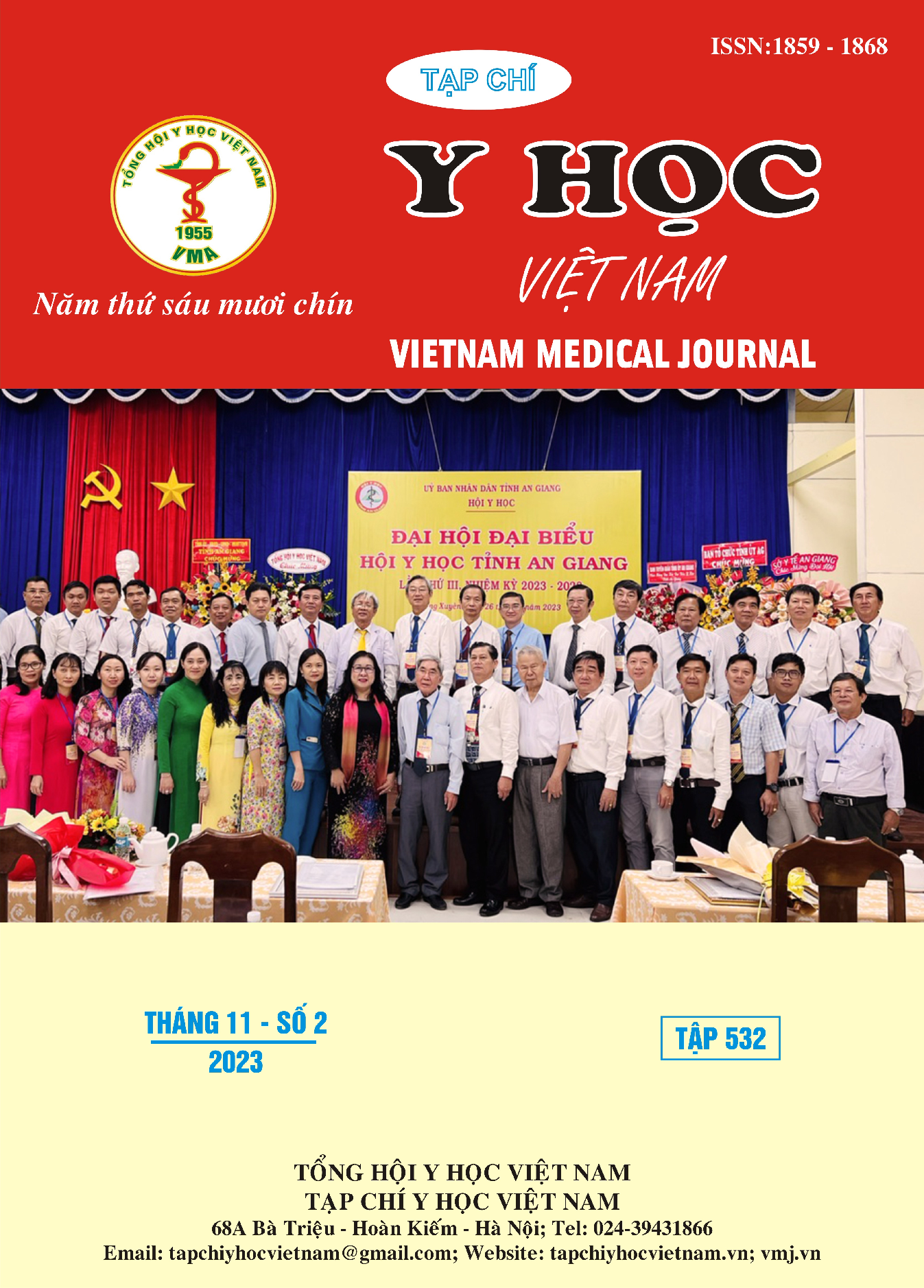MỘT SỐ ĐẶC ĐIỂM VỀ XƯƠNG VÀ RĂNG Ở BỆNH NHÂN KHỚP CẮN SÂU VÙNG CỬA TRÊN PHIM SỌ NGHIÊNG TỪ XA
Nội dung chính của bài viết
Tóm tắt
Mục tiêu: Mô tả một số đặc điểm về xương và răng của bệnh nhân khớp cắn sâu vùng cửa trên phim sọ nghiêng từ xa. Đối tượng và phương pháp: Nghiên cứu được thực hiện trên 84 phim sọ nghiêng từ xa của bệnh nhân có khớp cắn sâu vùng cửa đến khám và điều trị tại Khoa Nắn chỉnh răng, Bệnh viện Răng Hàm Mặt Trung ương Hà Nội và Viện đào tạo Răng Hàm Mặt, trường Đại học Y Hà Nội. Kết quả: Khớp cắn sâu gặp ở nhóm tương quan xương loại II chiếm tỷ lệ cao nhất là 63,1%. Góc Gonial giảm (119,5°±7,1), góc mặt phẳng hàm trên (PP,SN) tăng (9,7°±4,1), tỷ lệ UAFH/LAFH (0,82±0,08) và PFH/AFH
(67,4%±5,7) tăng. Kết luận: Góc Gonial giảm và xương hàm trên xoay xuống dưới làm tăng độ cắn trùm vùng cửa. Tỷ lệ giữa các tầng mặt của bệnh nhân khớp cắn sâu có sự bất hài hòa.
Chi tiết bài viết
Từ khóa
Khớp cắn sâu, phim sọ nghiêng từ xa
Tài liệu tham khảo
2. Ceylan I, Eröz UB. The effects of overbite on the maxillary and mandibular morphology. Angle Orthod. 2001;71(2):110-115. doi:10.1043/0003- 3219(2001)071<0110:TEOOOT>2.0.CO;2
3. El-Dawlatly MM, Fayed MMS, Mostafa YA. Deep overbite malocclusion: analysis of the underlying components. Am J Orthod Dentofacial Orthop. 2012;142(4): 473-480. doi: 10.1016/ j.ajodo.2012.04.020
4. Beckmann SH, Kuitert RB, Prahl-Andersen B, Segner D, The RP, Tuinzing DB. Alveolar and skeletal dimensions associated with lower face height. Am J Orthod Dentofacial Orthop. 1998;113(5): 498-506. doi: 10.1016/ s0889-5406 (98)70260-4
5. Sangcharearn Y, Ho C. Effect of Incisor Angulation on Overjet and Overbite in Class II Camouflage Treatment. A typodont study. Angle Orthod. 2007;77(6): 1011-1018. doi: 10.2319/ 111206-460.1
6. Fattahi H, Pakshir H, Afzali Baghdadabadi N, Shahian Jahromi S. Skeletal and dentoalveolar features in patients with deep overbite malocclusion. J Dent (Tehran). 2014;11(6):629-638.
7. Noroozi H. A simple method of determining the bite-opening effect of posterior extrusion. J Clin Orthod. 1999;33(12):712-714.
8. Ng J, Major PW, Heo G, Flores-Mir C. True incisor intrusion attained during orthodontic treatment: a systematic review and meta-analysis. Am J Orthod Dentofacial Orthop. 2005;128(2): 212-219. doi:10.1016/j.ajodo.2004.04.025


